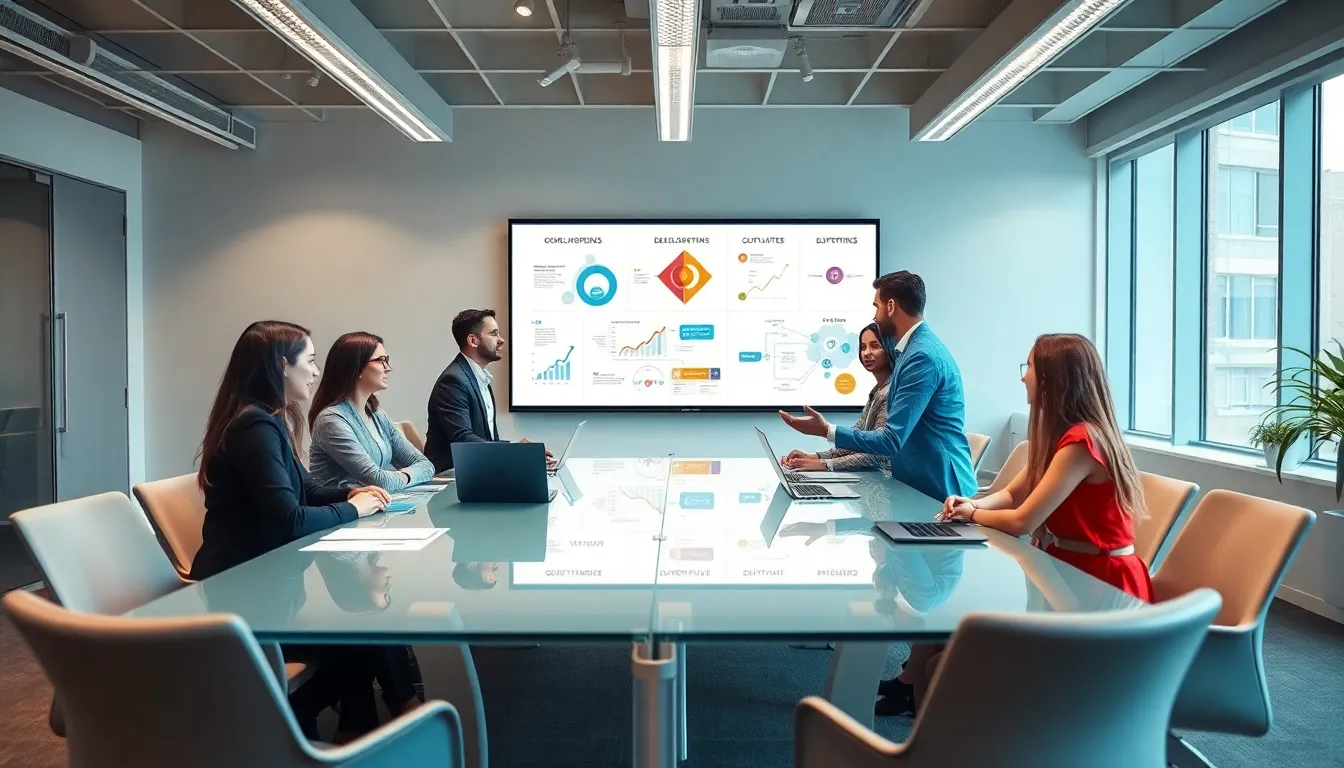Software development might sound as enticing as watching paint dry, but it’s anything but dull. In today’s world, it shapes our daily lives, from the apps that help us shop to the software that powers our cars. Whether you’re a tech novice or considering a career in the field, understanding the various types of software development can spark your interest. Let’s jump into the world of coding and see what makes each type unique, funny quirks and all.
Table of Contents
Toggle1. Overview Of Software Development

Software development encompasses the entire process of creating, designing, deploying, and maintaining software applications. Most people might think of it as just coding, but it’s a complex ecosystem involving various disciplines, methodologies, and technologies. Development encompasses everything from brainstorming initial ideas to implementing user feedback after launch. In essence, it’s as intricate as a Broadway show, lots of backstage work must happen for that final curtain to hit.
There are several branches, or types, of software development, each catering to different needs and problems. The variations help ensure applications and systems are as user-friendly and efficient as possible. As technology evolves, so do the strategies and techniques employed by developers. This dynamic landscape can be a bit overwhelming, but grasping the different types opens up a whole world of opportunities.
2. Web Development
Web development is like the wild west of the digital age, constantly changing and expanding its horizons. It’s the process behind creating websites and web applications, making it an essential skill in today’s job market. Within web development, there are three significant branches:
2.1 Frontend Development
Frontend development deals with everything users interact with directly. Think of it as the stage design of a play: it needs to be appealing, functional, and user-friendly. Technologies like HTML, CSS, and JavaScript play a crucial role here. The aim is to create a delightful experience for users that’s as smooth as freshly churned butter.
2.2 Backend Development
On the flip side, backend development is all about the behind-the-scenes workings. Rather than creating visuals, backend developers manage servers, databases, and application logic. It’s akin to operating a car: while the driver enjoys the ride, the mechanics ensure it runs smoothly underneath. Languages such as Python, Ruby, and Java are popular in this realm, and without backend development, our beautiful frontends would crumble.
2.3 Full Stack Development
Full stack development is like being a Swiss Army knife in the development world. Full stack developers are comfortable working on both the front and back ends of applications. They handle the entire project lifecycle from conception to completion, often becoming the project’s go-to guru for any tech-related issues. Their versatility keeps teams moving efficiently.
3. Mobile Application Development
In an age where everyone seems glued to their smartphones, mobile application development has exploded in popularity. There are two primary types within this category:
3.1 Native Mobile Development
Native development focuses on creating applications for specific platforms, like iOS or Android. This approach allows developers to take advantage of device features and create the best possible user experience. It’s like speaking fluent French when you’re in Paris, natives appreciate the effort. Tools like Swift for iOS and Kotlin for Android are essential in this development style.
3.2 Cross-Platform Development
Cross-platform development aims to create applications that work seamlessly across multiple operating systems. It’s like getting a one-size-fits-all sweater that actually fits. Frameworks like React Native and Flutter help developers achieve this balance. While the experience may not always match that of native apps, the convenience of targeting broader audiences is a significant advantage.
4. Desktop Software Development
Desktop software development might feel like a classic car in the tech world, solid, reliable, and timeless. This type focuses on creating applications that run on standalone computers or laptops. Developers often use languages like C#, Java, or Python to build software that can perform various functions, from word processing to graphic design. It’s like crafting a toolkit, each application serves a specific purpose, making users’ lives easier. As remote work becomes more prevalent, well-developed desktop applications remain crucial for productivity.
5. Game Development
Game development can be likened to a magical realm where creativity meets technology. It involves crafting engaging and immersive experiences for players. Developers work in teams, ranging from writers and artists to gamers and programmers, to bring their visions to life. They use engines like Unity and Unreal Engine to build games that can be enjoyed across platforms. You might say it’s the circus of software development, there’s a bit of something for everyone, and the showcasing of talent can be extraordinary.
6. Embedded Software Development
Embedded software development is where the magic of integration happens. This type focuses on developing software for embedded systems, typically found in devices like washing machines and microwaves. Instead of traditional computers, this software interacts with hardware directly, making it quite specialized. Languages such as C and C++ are commonly employed because of their efficiency and control over system resources. The world might be buzzing with the Internet of Things (IoT), but embedded developers are the unsung heroes ensuring these devices operate flawlessly.
7. Cloud Software Development
Cloud software development has taken the tech industry by storm, revolutionizing how applications are developed and deployed. Rather than being confined to local servers or machines, cloud development involves creating software that operates in the cloud. Developers can use services like AWS, Microsoft Azure, and Google Cloud to build scalable and flexible applications. It’s akin to having an office in the sky, the benefits include quick deployment and easy access for users from anywhere, anytime. As companies continue to transition to cloud-based solutions, this type of development is undeniably shaping the future.
8. DevOps And Agile Practices
Combining development and operations, DevOps practices amplify the efficiency of software development processes. The primary goal is to shorten the development lifecycle while delivering high-quality software. By embracing Agile methodologies, teams prioritize collaboration and adaptability. It’s like a well-choreographed dance, smooth transitions and communication can lead to remarkable results. Continuous integration and delivery pipelines are common practices in the ever-evolving landscape of DevOps, establishing faster and more reliable software releases.





